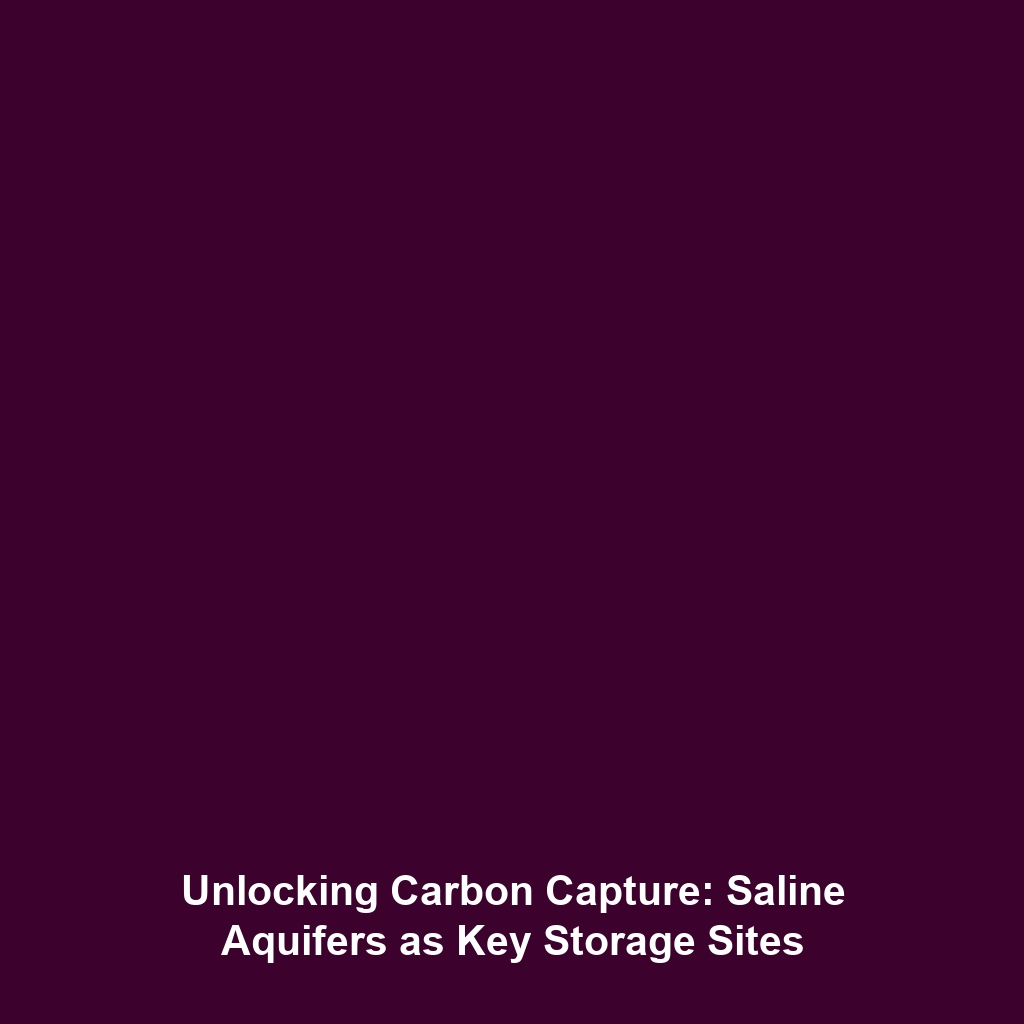Saline Aquifers: A Potential Giant in Carbon Capture & Storage (CCS)
Category: Carbon Capture & Storage (CCS)
Topic: Saline aquifers are considered one of the largest potential storage sites due to their global availability and storage capacity.
Introduction
Saline aquifers present a groundbreaking opportunity in the field of Carbon Capture & Storage (CCS), serving as some of the largest and most widely accessible storage sites globally. These geological formations, rich in saline water, have the potential to securely house CO2 emissions captured from industrial processes and power plants. As climate change drives the need for effective solutions to reduce atmospheric carbon dioxide levels, the significance of saline aquifers in CCS initiatives cannot be overstated. Their vast storage capacity combined with widespread geographical availability positions them as a critical component in mitigating climate impact through strategic emissions management.
Key Concepts
Understanding saline aquifers is essential to grasp their role in Carbon Capture & Storage (CCS). Here are some key concepts:
- Definition: Saline aquifers are underground layers of porous rock that contain saline water. These formations can absorb and store significant quantities of CO2.
- Storage Capacity: Extensive studies suggest that saline aquifers could potentially store billions of tons of CO2, making them one of the largest resources available for CCS applications.
- Injection Techniques: Advanced technologies for CO2 injection allow safe and efficient transfer of captured CO2 into saline formations, ensuring minimal environmental impact.
- Monitoring and Verification: Continuous monitoring is crucial to ensure the integrity of CO2 storage in saline aquifers, employing techniques like seismic imaging and pressure monitoring.
Applications and Real-World Uses
Saline aquifers are increasingly recognized for their applications in the field of Carbon Capture & Storage (CCS). Here are some pivotal applications:
- Industrial CO2 Sequestration: Many industries utilize saline aquifers to sequester large volumes of CO2 emissions, proving to be an essential strategy in reducing their carbon footprint.
- Enhanced Oil Recovery (EOR): In certain regions, CO2 injected into saline aquifers also aids in oil recovery, thereby offering a dual benefit of resource extraction and carbon storage.
- Support for Renewable Energy: CCS technologies utilizing saline aquifers can enhance the sustainability of renewable energy projects by offsetting emissions produced during energy generation.
Current Challenges
Despite their potential, several challenges hinder the effective utilization of saline aquifers for Carbon Capture & Storage (CCS):
- Regulatory Hurdles: The process of obtaining permits for CO2 storage can be lengthy and complex.
- Geological Uncertainty: Variability in aquifer properties may lead to concerns regarding the long-term stability and containment of injected CO2.
- Cost Considerations: High initial investment and operational costs can be a barrier to widespread adoption of CCS technologies using saline aquifers.
- Public Perception: Misconceptions regarding the safety of CO2 storage may impact community acceptance of CCS projects.
Future Research and Innovations
Looking ahead, research in the field of saline aquifers and Carbon Capture & Storage (CCS) is unveiling innovative approaches:
- Advanced Modeling: Improved geological models are being developed to better predict CO2 behavior in saline formations.
- New Injection Techniques: Researchers are exploring enhanced methods for CO2 injection that maximize storage efficiency and minimize risks.
- Integration with Circular Economy: Future projects are examining viable ways to incorporate CCS into a circular economy framework, ensuring a greener approach to industrial operations.
Conclusion
In summary, saline aquifers represent a significant opportunity within the scope of Carbon Capture & Storage (CCS), with their global availability and immense storage capacity. As technological advancements continue to emerge, the role of saline aquifers in climate change mitigation strategies will likely become increasingly crucial. For further reading on CCS and its implications for sustainable development, consider exploring related topics such as Carbon Sequestration Technologies and Climate Policy Frameworks.

